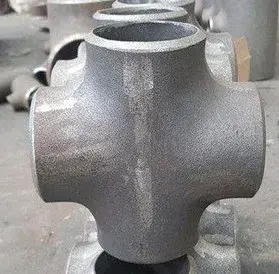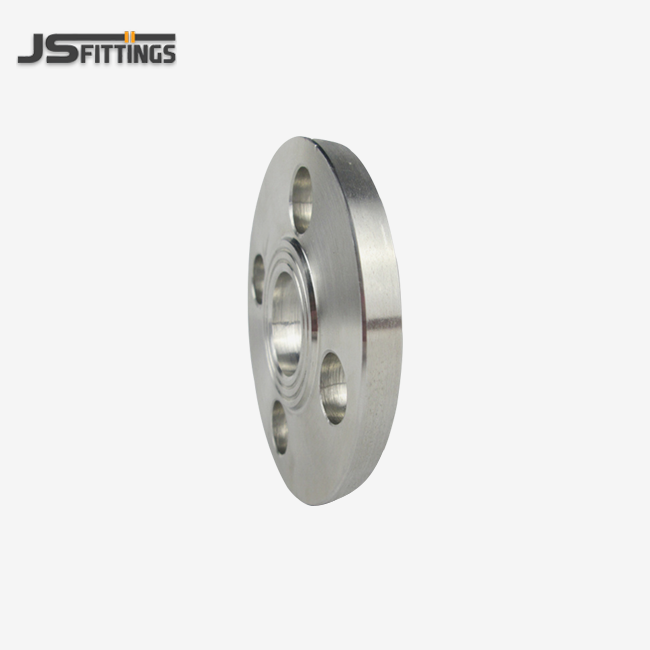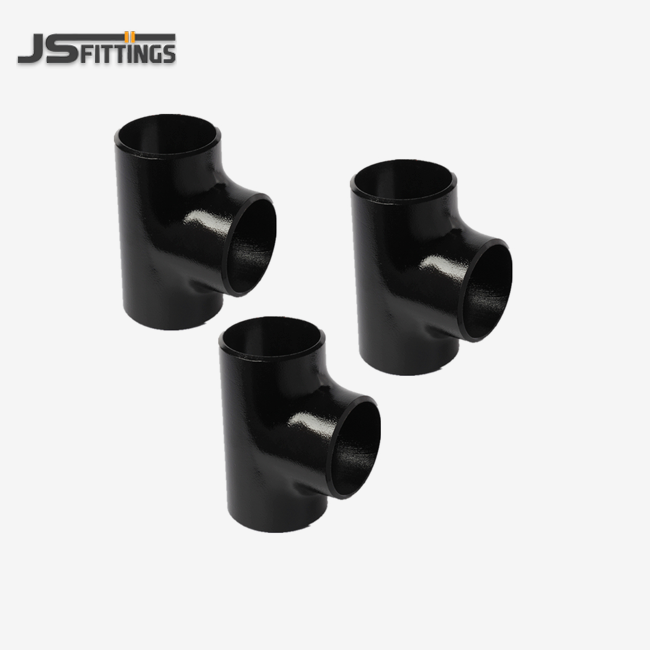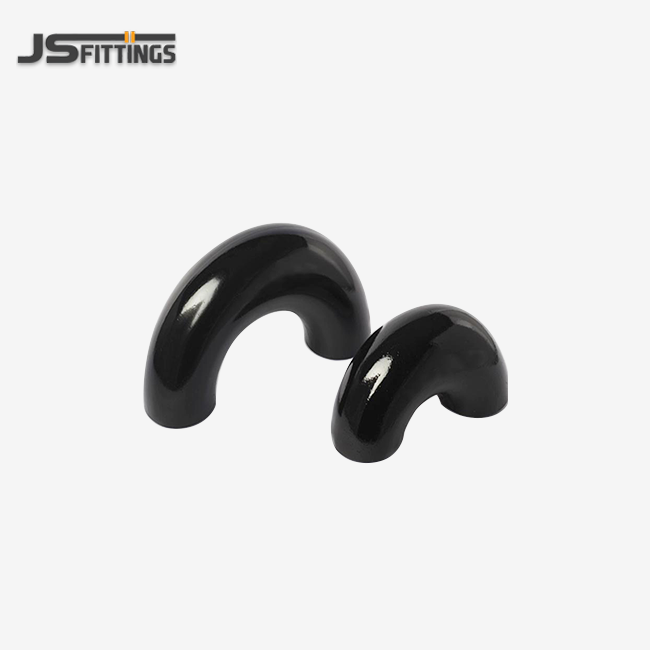What material grades are available for pipe equal crosses? (carbon, stainless, alloy)
Pipe equal crosses are manufactured using various material grades to meet diverse industrial requirements. Let's explore the most common materials and their specific grades:
Carbon Steel Grades
Carbon steel is often used for pipe equal crosses because it is cheap and can be used in many ways. Some common types of carbon steel are:
- ASTM A234 WPB: This grade can be welded well and is good for use in moderately heated environments.
- ASTM A420 WPL6: This grade is engineered for use at low temperatures and is very tough when it's cold.
- This is ASTM A860 WPHY, a high-yield strength carbon steel that is great for use in high-pressure oil and gas applications.
Stainless Steel Grades
Because it doesn't rust, stainless steel is often used to make pipes equal cross in the food, chemical, and drug stores. In general, these are the grades:
- Austenitic steels like ASTM A403 WP304/304L are simple to make and don't rust.
- What does ASTM A403 WP316/316L mean? It doesn't rust as quickly as 304/304L, even when chlorides are present.
- This kind (ASTM A403 WP321) is stronger because of Ti3+, and it doesn't rust as quickly when it gets hot.
Alloy Steel Grades
Alloy steel pipe equal crosses are strong and work well in hot conditions, so they are made to last in tough conditions. Some well-known types of alloy steel are:
- Chrome and molybdenum are in ASTM A234 WP11. It can be used in hot places of up to 593°F (1100°C).
- To 1200°F (649°C), ASTM A234 WP22 is less apt to get hot. This is because it has more molybdenum and chromium.
- These changes have made ASTM A234 WP91 better. It now has more niobium and vanadium. Power plants that get as hot as 649°F (1200°C) are places where it's made to work.
Corrosion resistance, mechanical strength, and temperature rating comparison
To select the optimal material for your pipe equal cross, it's essential to understand how different materials compare in terms of corrosion resistance, mechanical strength, and temperature ratings. Let's examine these crucial factors:
Corrosion Resistance
In a lot of industry settings, corrosion protection is important because it determines how safe and how long water pipes last. How the elements look next to each other:
- Unfortunately, carbon steel doesn't fight rust very well.It might need extra steps or layers to keep it safe in places where rust is likely to happen.
- Chrome in stainless steel makes a metal shell that protects the steel and keeps it from rusting. For grade 316/316L, stopping rust from salt is better than for grade 304/304L.
- Most of the time, stainless steel doesn't rust as easily as carbon steel. There are even alloys that are made to work better in places where rust is more likely to happen.
Mechanical Strength
For pipe equal crosses to be able to handle both internal forces and external loads, they need to be very strong mechanically. The elements are shown next to each other:
- Carbon steel has a good measure of strength-to-weight ratio and can handle a lot of different pressures. For high-pressure uses, high-yield types like WPHY make the material stronger.
- Stainless steel is usually about the same strength as carbon steel, or a little less. Austenitic types are especially good at being tough and flexible.
- Alloy Steel: These steels are designed for high-strength uses and often have better mechanical qualities than both carbon steel and stainless steel, especially at high temperatures.
Temperature Ratings
When you're choosing pipe equal crosses that can work with your system, temperature numbers are very important. What the materials are like side by side:
- From -20°F to 800°F (-29°C to 427°C), carbon steel can handle it. Some types, like WPL6, are even made to work well at low temperatures.
- Most of the time, stainless steel can handle temperatures between -325°F and 1500°F (-198°C to 816°C). Some types are better for use in cold or hot environments.
- Alloy steel is designed to resist high temperatures. Grades like WP91 can handle temperatures of up to 1200°F (649°C) while still having great tensile qualities.
When to choose stainless steel vs carbon steel equal crosses?
Selecting between stainless steel and carbon steel pipe equal crosses depends on various factors related to your specific application. Let's explore the scenarios where each material type is most suitable:
Choosing Stainless Steel Equal Crosses
When these things happen, stainless steel is the best choice:
- Iron rusts: Stainless steel works best in places where iron rusts or strong chemicals are present.
- Since steel is clean and doesn't let germs grow on its surface, it can be used to clean. Keep yourself clean and don't get things dirty in science, health, and cooking, among other places.
- Type 316/316L stainless steel is good for places near water or the coast because it can handle salt.
- A lot of different temperatures: While very low temperatures are not possible, very high temperatures are possible. This is because stainless steel is flexible.
- People who care about how their pipes look might pick stainless steel. It looks clean and cool.
Opting for Carbon Steel Equal Crosses
Carbon steel is often the material of choice in these scenarios, pipe equal cross-section.
- Cost-Conscious Projects: Carbon steel's lower starting cost makes it a good choice for non-corrosive uses when money is tight.
- For high-pressure systems, carbon steel, especially high-yield types, is very strong for how light it is. This means it can be used in oil and gas and power industries where high pressure is needed.
- When the weather is mild, it's useful for: This is the temperature range for carbon steel: -20°F to 800°F (-29°C to 427°C). It works well and costs less than stainless steel.
- When it comes to welding, carbon steel is generally easier to work with than stainless steel. This can help with jobs that need to be fixed or built up a lot on-site.
- Why is carbon steel better than stainless steel types that aren't magnetic when magnetic properties are needed? Some flow measurement methods need magnetic properties.
Considerations for Alloy Steel Equal Crosses
You can choose between stainless steel and carbon steel for most uses, but alloy steel equal crosses should be considered in these situations:
- Extreme High-Temperature Service: Specialized alloy steels offer better creep resistance and keep their mechanical qualities at high temperatures for use in places where temperatures are above 1000°F (538°C), like power plants and petroleum plants.
- Service with Hydrogen: Some alloy steels are made to prevent hydrogen embrittlement, a process that can break other materials very badly when used to process or store hydrogen.
- In oil and gas jobs where hydrogen sulfide is a problem, certain grade steels are made to not crack when exposed to it. This is called sulfidic corrosion.
Selecting the right material for your pipe equal cross requires careful consideration of your specific operating conditions, budget constraints, and long-term performance requirements. By understanding the strengths and limitations of each material type, you can make an informed decision that ensures the reliability, safety, and efficiency of your piping system.
Conclusion
Choosing the right material for your pipe equal cross is a critical decision that impacts the performance, longevity, and safety of your piping system. By carefully considering factors such as corrosion resistance, mechanical strength, temperature ratings, and specific application requirements, you can select the optimal material that meets your needs while balancing cost considerations.
At JS FITTINGS, we know how hard it is to pick the right pipe fittings for your jobs. Our company has been making top-notch steel butt-weld pipe fittings, flanges, and pipes for more than 40 years. We are committed to providing our customers with the best products and advice. With our ISO 9001, CE, and GOST-R certifications and a large selection of pipe equal crosses in different sizes and materials, we can meet the needs of the most challenging industrial uses in the Middle East, South America, Europe, and Asia.
FAQ
1. What is a pipe equal cross?
A pipe equal cross is a fitting that connects four pipes of the same diameter at right angles, allowing for multi-directional flow in piping systems. It is commonly used in industrial applications to distribute or combine fluid flow.
2. How do I determine the right size for a pipe equal cross-section?
The size of a pipe equal cross is determined by the nominal pipe size (NPS) of the connecting pipes. Measure the outer diameter of your pipes and consult a pipe size chart to find the corresponding NPS. Ensure all four connections of the equal cross match this size.
3. Can pipe equal crosses be used in high-pressure systems?
Yes, pipe equal crosses can be used in high-pressure systems when manufactured from appropriate materials and to the correct pressure rating. High-yield carbon steel grades like ASTM A860 WPHY or certain alloy steels are commonly used for high-pressure applications.
4. How often should pipe equal crosses be inspected?
The frequency of inspections depends on the application, operating conditions, and regulatory requirements. Generally, it's recommended to perform visual inspections during routine maintenance and conduct more thorough examinations, such as non-destructive testing, at intervals specified by industry standards or your facility's maintenance program.
Quality Pipe Equal Cross Manufacturers, Suppliers, and Factory | JS FITTINGS
Looking for reliable pipe equal cross manufacturers, suppliers, or a trusted factory? Look no further than JS FITTINGS. With our state-of-the-art production facilities and commitment to quality, we offer a comprehensive range of pipe equal crosses in various materials and specifications to meet your project needs.
Our experienced team is ready to assist you in selecting the perfect pipe equal cross for your application, ensuring optimal performance and longevity. Whether you require carbon steel, stainless steel, or alloy steel fittings, we have the expertise and capacity to deliver high-quality products that meet or exceed industry standards.
To discuss your pipe equal cross requirements or request a quote, please contact us at admin@chinajsgj.com. Our dedicated sales team will be happy to provide you with detailed product information, lead times, and competitive pricing. Trust JS FITTINGS for all your pipe fitting needs and experience the difference that comes with working with a leading manufacturer in the industry.
References
1. American Society of Mechanical Engineers. (2021). ASME B16.9: Factory-Made Wrought Buttwelding Fittings.
2. American Society for Testing and Materials. (2020). ASTM A234: Standard Specification for Piping Fittings of Wrought Carbon Steel and Alloy Steel for Moderate and High Temperature Service.
3. Schweitzer, P. A. (2010). Fundamentals of Corrosion: Mechanisms, Causes, and Preventative Methods. CRC Press.
4. Smith, P. (2018). Piping Materials Guide: Selection and Applications. Elsevier.
5. Nayyar, M. L. (2000). Piping Handbook. McGraw-Hill Education.
6. Antaki, G. A. (2003). Piping and Pipeline Engineering: Design, Construction, Maintenance, Integrity, and Repair. CRC Press.



_1761034851179.webp)
